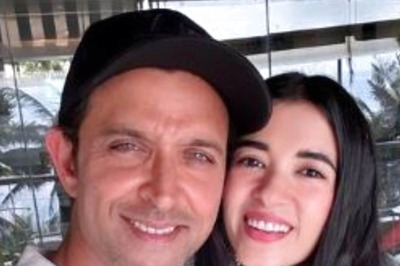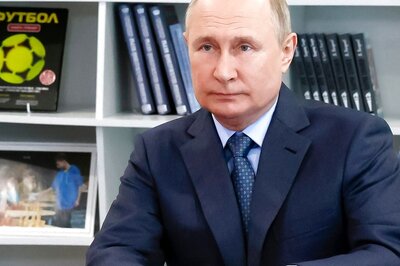
views
Paper I
Ricardian, Marshallian and Walrasain approaches to price determination. Types of Markets and price determination. Criteria or Welfare improvement. Alternate theories of distribution.
Functions of money
Measurement of price level changes-Money and real balances-Monetary standards-High-powered money and the Quantity theory of money, its variants and critiques thereof-Demand for and supply of money-The money multiplier. Theories of determination of interest rate-Interest and prices-Theories of inflation and control of inflation.
Full employment and Says' Law-underemployment equilibrium-Keynes' Theory of employment (and income) determination-Critiques of Keynesian Theory.
The modern monetary system
Banks, non-bank financial intermediaries, Discount House, and Central Bank. Structure of Money and financial markets and control. Money market instruments, bills and bonds. Real and nominal interest rates. Goals and instruments of monetary management in closed and open economies. Relation between the Central Bank and the Treasury. Proposal for ceiling on growth rate of money.
Public finance and its role in market economy in stabilisation, supply stability, allocative efficiency, distribution and development. Sources of revenue-Forms of Taxes and subsidies, their incidence and effects; Limits to taxation, loans, crowding-out effects, and limits to borrowing. Types of budget deficits-Public expenditure and its effects.
International Economics
Old and New theories of International Trade.
Comparative advantage, Terms of trade and offer curve.
Product cycle and Strategic trade theories.
"Trade as an engine of growth" and theories of underdevelopment in an open economy.
Forms of protection.
Balance of Payments Adjustments Alternative Approaches.
Price versus income, income adjustments under fixed exchange rates.
Theories of policy mix.
Exchange rate adjustments under capital mobility.
Floating Rates and their implications for developing countries; Currency Boards.
IMF and the World Bank.
W.T.O.
Trade Blocks and monetary unions.
Growth and Development
Theories of growth: Classical and neo-classical theories; The Harrod model; economic development under surplus Labour; wage-goods as a constraint on growth; relative importance of physical and human capitals in growth; innovations and development; Productivity, its growth and source of changes thereof. Factors determining savings to income ratio and the capital-out put ratio.
Main features of growth: Changes in Sectoral compositions of income; Changes in occupational distribution; changes in income distribution; changes in consumption levels and patterns; changes in savings and investment and in pattern of investment. Case for and against industralization. Significance of agriculture in developing countries.
Relation between state, planning and growth, Changing roles of market and plans in growth economic policy and growth.
Role of foreign capital and technology in growth. The significance of multi-nationals.
Welfare indicators and measures of growth-Human development indices-The basic needs approach.
Concept of sustainable development; convergence of levels of living of developed and developing countries; meaning of self-reliance in growth and development.
Paper II
Evolution of the Indian Economy till independence. The Colonial Heritage : Land System & Agriculture, Taxes, Money and credit, Trade, Exchange Rate, the "Drain of Wealth controversy" of late 19th Century. Randade's critique of Laissez-Faire; Swadeshi movement; Gandhi and Hind Swaraj.
Indian Economics in Post-Independent Era: Contributions of Vakil, Gadgil and Rao. National and percapita Income; Patterns, Trends, Aggregate and sectoral-composition and changes therein. Broad factors determining National Income and its distribution; Measures of poverty. Trends in below poverty-line proportion.
Employment: Factors determining employment in short and long periods. Role of capital, wage-goods, wage-rate and technology. Measures of unemployment. Relation between income, poverty and employment, and issues of distribution and social justice.
Agriculture: Institutional set-up of land system size of agriculture holdings and efficiency-Green Revolution and technological changes-Agricultural prices and terms of trade-Role of public distribution and farm-subsidies on agricultural prices and production. Employment and poverty in agriculture-Rural wages-employment schemes-growth experience-land reforms. Regional disparities in agricultural growth. Role of Agriculture in export.
Industry: Industrial system of India: Trends in Composition and growth. Role of public and private sectors, Role of small and cottage industries. Indian industrial Strategy-Capital versus consumer goods, wage-goods versus luxuries, capital-intensive versus labour-intensive techniques, import-substituting versus export promotion. Sickness and high-cost Industrial policies and their effects. Recent moves for liberalisation and their effects on Indian industry.
Money and banking: The monetary institutions of India: Factors determining demand for and supply of money. Sources of Reserve money-money multiplier-Techniques of money supply regulation under open economy. Functioning of money market in India. Budget deficit and money supply. Issues in Reform of Monetary and Banking Systems.
Index numbers of price levels: Course of Price level in post-Independence period-sources and causes of inflation-role of monetary and supply factors in price level determination-policies towards control of inflation. Effects of inflation under open economy.
Trade, balance of payments and exchange: Foreign trade of India; composition and direction shifts in trade policy from import substituion to export promotion. Impact of liberalisation on pattern of trade. India's external Borrowings-the Debt problem. Exchange rate of the rupee; Devaluations, depreciations and their effects on balance of payments-Gold imports and Gold policy-convertibility on current and capital accounts-rupee in an open economy. Integration of Indian economy with world economy-India and the WTO.
Public Finance and Fiscal Policy: Characteristics of and trends in India's Public Finance. Role of Taxes, (direct and indirect) and subsidies-Fiscal and monetary deficits-public expenditures and their significance-Public Finance and Inflation-Limiting Government's debt-Recent fiscal policies and their effects.
Economic Planning in India: Trends in Savings and investment-Trends in Savings to Income and capital-output ratios-Productivity, its sources, growth and trends-growth versus distribution-Transition from Central Planning to indicative planning-relation between Market and Plan-strategies for Growth, social justice and Plans. Planning and increasing the growth rate.




















Comments
0 comment